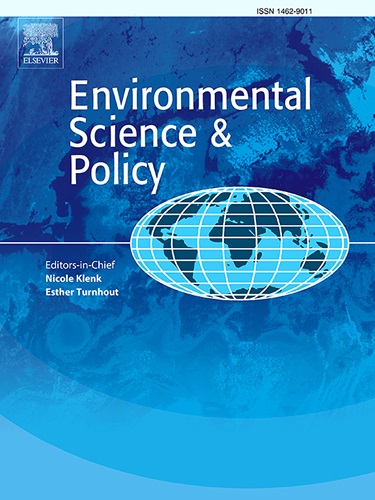森林景观恢复中利益相关者互动模式的影响因素:制度和组织接近的作用
IF 5.2
2区 环境科学与生态学
Q1 ENVIRONMENTAL SCIENCES
引用次数: 0
摘要
森林景观恢复(FLR)依赖于利益相关者的参与和参与式治理。然而,对涉众动态的理解仍然有限。为了解决这个问题,我们应用社会网络分析来评估埃塞俄比亚和马达加斯加森林景观恢复(FLR)倡议中机构和组织的接近性如何影响网络形成。我们使用Net-Map从埃塞俄比亚的202个相互关联的利益相关者和马达加斯加的85个利益相关者那里收集关系数据。使用igraph R包进行网络可视化和描述性分析,使用指数随机图模型(Exponential Random Graph Model, ERGM)识别影响网络形成的因素。我们的研究显示了两国利益相关者参与的不平衡:埃塞俄比亚的网络由知识中心主导,而马达加斯加的网络则由拥有大量资金的国际非政府组织主导。ERGM的结果显示,埃塞俄比亚的网络更具包容性,而马达加斯加的网络则集中在非政府组织和政府实体之间。制度接近性对网络形成有显著影响,而组织接近性对网络形成无显著影响。这两个国家都有集中的网络,利益相关者与有影响力的行动者建立联系,以建立桥梁信任。此外,可以观察到高协作水平,因为具有共享合作伙伴的利益相关者经常形成联系,这促进了粘合信任。森林景观恢复依赖于两个关键因素:学术知识和资金。我们的研究结果强调了建立更具包容性的FLR网络的必要性,因为目前的结构由研究机构和国际非政府组织主导,限制了当地社区的参与。虽然机构的接近性影响着FLR工作,但平衡集中化与包容性对于促进协作、复原力和长期可持续性至关重要。本文章由计算机程序翻译,如有差异,请以英文原文为准。
Factors influencing stakeholder interaction patterns in Forest Landscape Restoration: The role of institutional and organizational proximity
Forest Landscape Restoration (FLR) relies on stakeholder engagement and participatory governance. However, understanding stakeholder dynamics remains limited. To address this, we applied social network analysis to assess how institutional and organizational proximity influence network formation within Forest Landscape Restoration (FLR) initiatives in Ethiopia and Madagascar. We used Net-Map to collect relational data from 202 interconnected stakeholders in Ethiopia and 85 in Madagascar. The igraph R package was used for network visualization and descriptive analysis, while the Exponential Random Graph Model (ERGM) was applied to identify factors influencing network formation. Our study shows imbalances in stakeholder participation between the two countries: Ethiopia's network is led by knowledge hubs, while Madagascar's is dominated by international NGOs with substantial funding. ERGM results reveal Ethiopia’s network is more inclusive, whereas Madagascar’s is concentrated among NGOs and government entities. Institutional proximity significantly influences network formation, while organizational proximity does not. Both countries have centralized networks, with stakeholders connecting to influential actors to build bridging trust. Additionally, high collaboration levels are observed, as stakeholders with shared partners often form connections, which fosters bonding trust. We conclude that forest landscape restoration relies on two key factors: academic knowledge and funding. Our findings highlight the need for more inclusive FLR networks, as current structures are dominated by research institutions and international NGOs, limiting local community participation. While institutional proximity shapes FLR efforts, balancing centralization with inclusivity is crucial for fostering collaboration, resilience, and long-term sustainability.
求助全文
通过发布文献求助,成功后即可免费获取论文全文。
去求助
来源期刊

Environmental Science & Policy
环境科学-环境科学
CiteScore
10.90
自引率
8.30%
发文量
332
审稿时长
68 days
期刊介绍:
Environmental Science & Policy promotes communication among government, business and industry, academia, and non-governmental organisations who are instrumental in the solution of environmental problems. It also seeks to advance interdisciplinary research of policy relevance on environmental issues such as climate change, biodiversity, environmental pollution and wastes, renewable and non-renewable natural resources, sustainability, and the interactions among these issues. The journal emphasises the linkages between these environmental issues and social and economic issues such as production, transport, consumption, growth, demographic changes, well-being, and health. However, the subject coverage will not be restricted to these issues and the introduction of new dimensions will be encouraged.
 求助内容:
求助内容: 应助结果提醒方式:
应助结果提醒方式:


